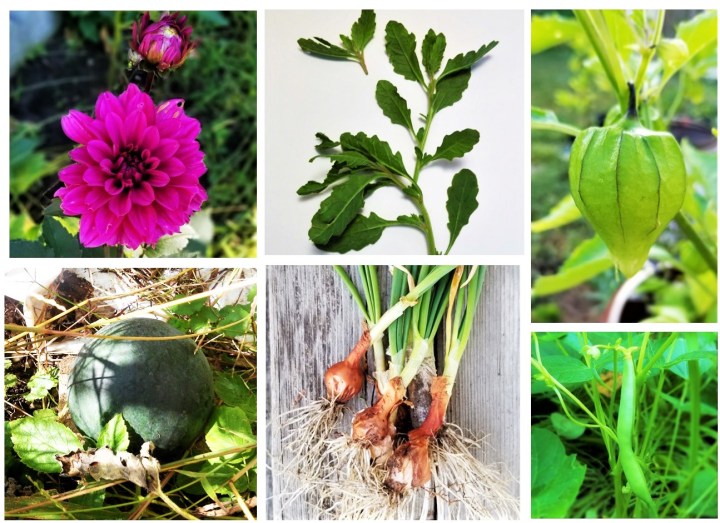
As my blog just reached the fifth year milestone, I realized that I have been growing edibles in my backyard in Southern Ontario for ten years. I started with the usual tomato seedlings from the garden centre, and my main goal really, was to have an affordable supply of my own fresh basil. Every year afterwards, I have added many other crops, from easy lettuce and radishes, to perennials such as asparagus and herbs, to very labour-intense crops of corn as part of a Three Sisters Garden, along with squash and beans. In this post, I am featuring a few that have enhanced my Mexican recipes throughout that decade; it was hard to narrow it down (according to my records, I have tried over 130 different crops so far). I chose one example from each of six different categories, and I focused on whether they are somewhat hard to find at my local stores and markets, expensive to buy, or require special growing conditions.
Aromatics: Multiplier onions
Multiplier onions (Allium cepa, var. aggregatum) are in the same botanical group as shallots; they have a similar bulb size at maturity, about one inch (2.54 cm) across, as well as the same growing habit, in which a plant is formed by a cluster of several stems that developed from a single set. Because of their bulb, they are sometimes called “knob onions”, in contrast to green onions or scallions, which have slender white ends. In the photo below, a comparison between a true scallion (top, no bulb) and a multiplier “knob” onion (bottom, bulging white bulb):

In Mexico they are usually cooked as shown above, but here in Canada, they are more often found at the supermarket without their leaves, labelled as pearl onions. To grow at home, they may be sprouted from seed indoors (photo below, left), or purchased as sets (photo below, right):
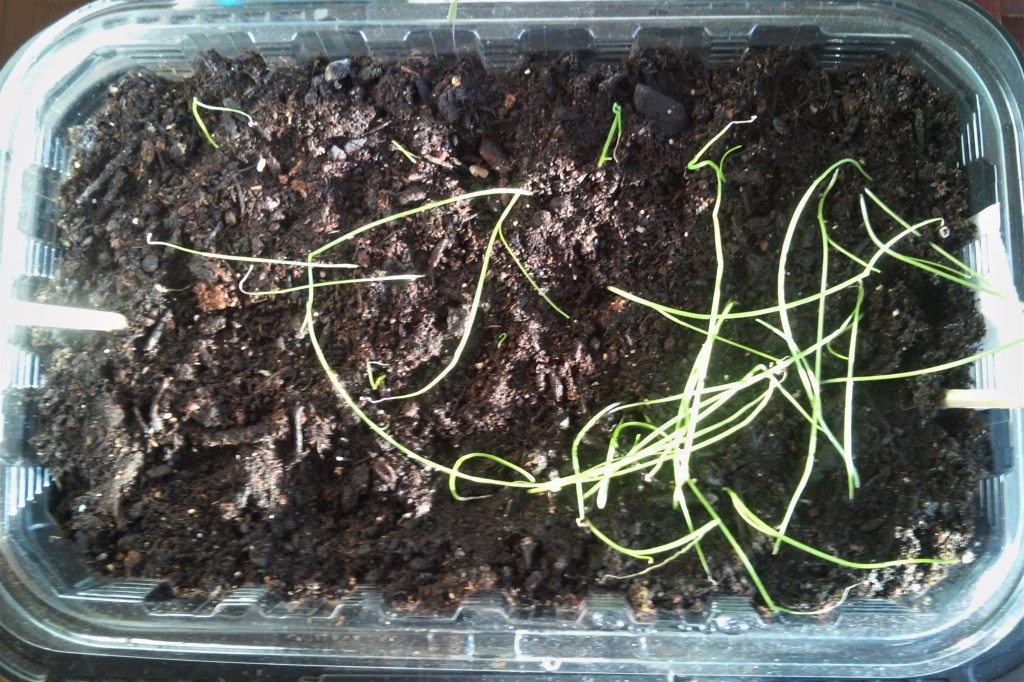
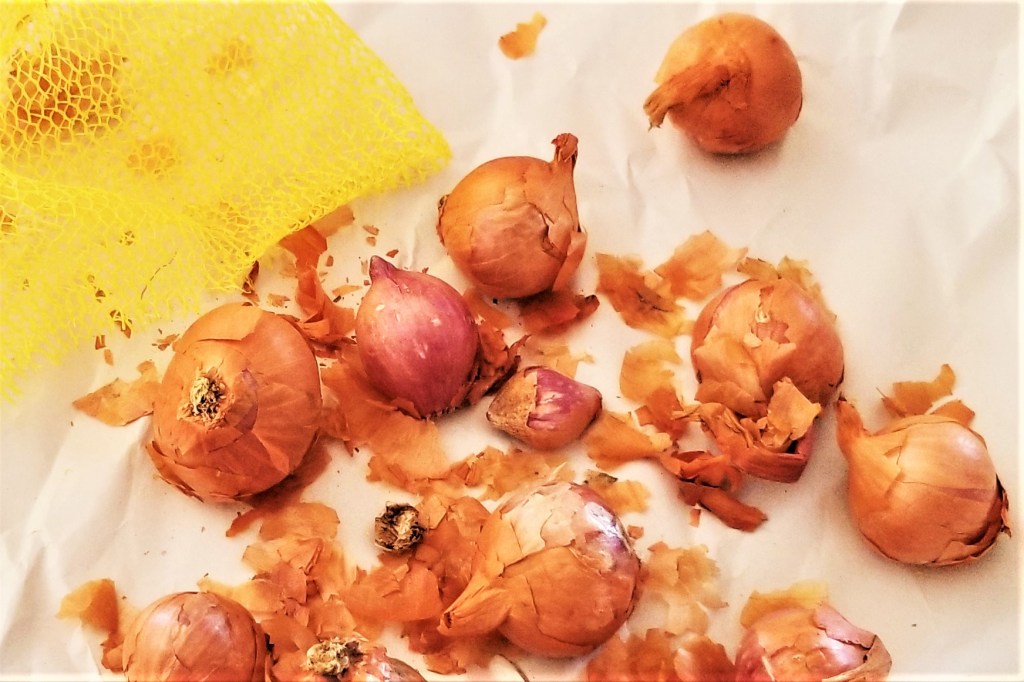
In spring, once risk of frost has passed, sprouts may be transplanted to the ground, and sets may be sown directly in soil. Each sprout or set will branch and develop into a bunch, and they will keep multiplying year after year. In the photo below, sown sets developing after one week in soil, and in the centre, a second-year bunch from sprouts:
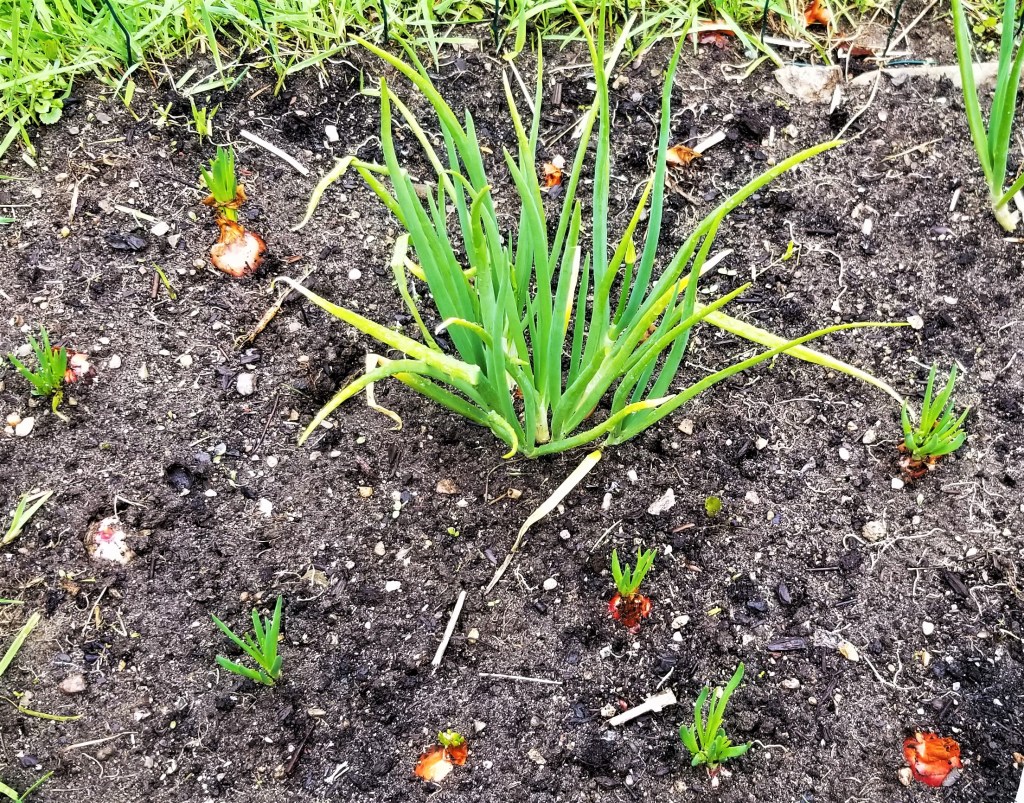
In terms of flavour, multipliers are just like a miniature version of a white onion, with a clear and very fresh taste, but not as pungent. Fresh knob onions are best when grilled, the Mexican way: brushed with oil and charred, either over charcoal, or indoors, using an iron skillet. They are a staple at taco joints and steak houses alike, served as a side with limes, and a sprinkle of salt:
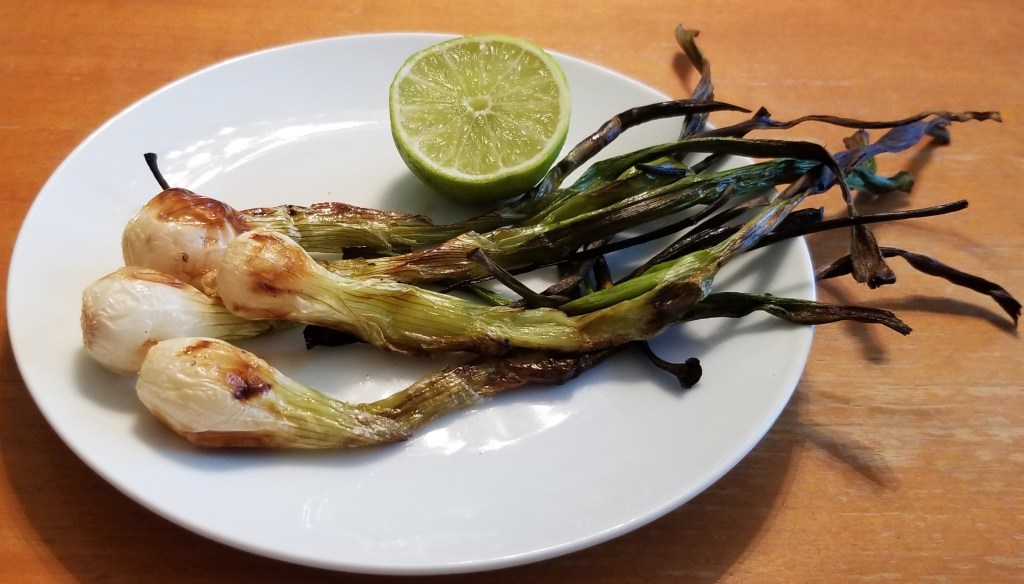
Edible flowers: Dahlias
Dahlia (Dahlia sp.) is Mexico’s national flower, a genus of bushy, tuberous plants, native to Mexico and Central America, in the same family as daisies, sunflowers and chrysanthemums. Dahlias grow their best in full sun, as perennials in warm regions, and as annuals in temperate climates, where tubers may be dug in the fall and kept in a cool spot above freezing temperatures, and then, replanted in spring. Last year was my first growing dahlias, and I had success from seeds started indoors, and also from a few purchased crowns with tubers. I reported progress after I had transplanted the seedlings outdoors (photo below, left), and planted the crowns directly in the ground (photo below, right):
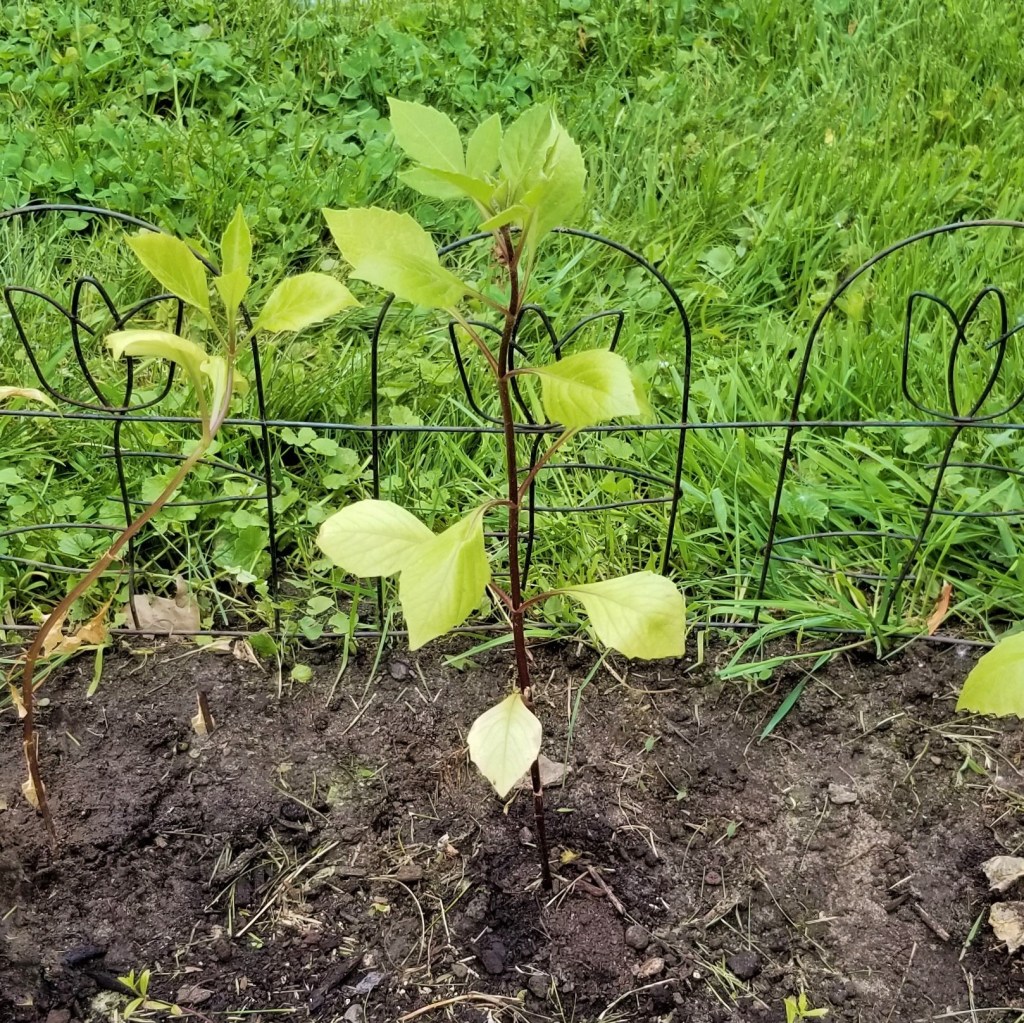
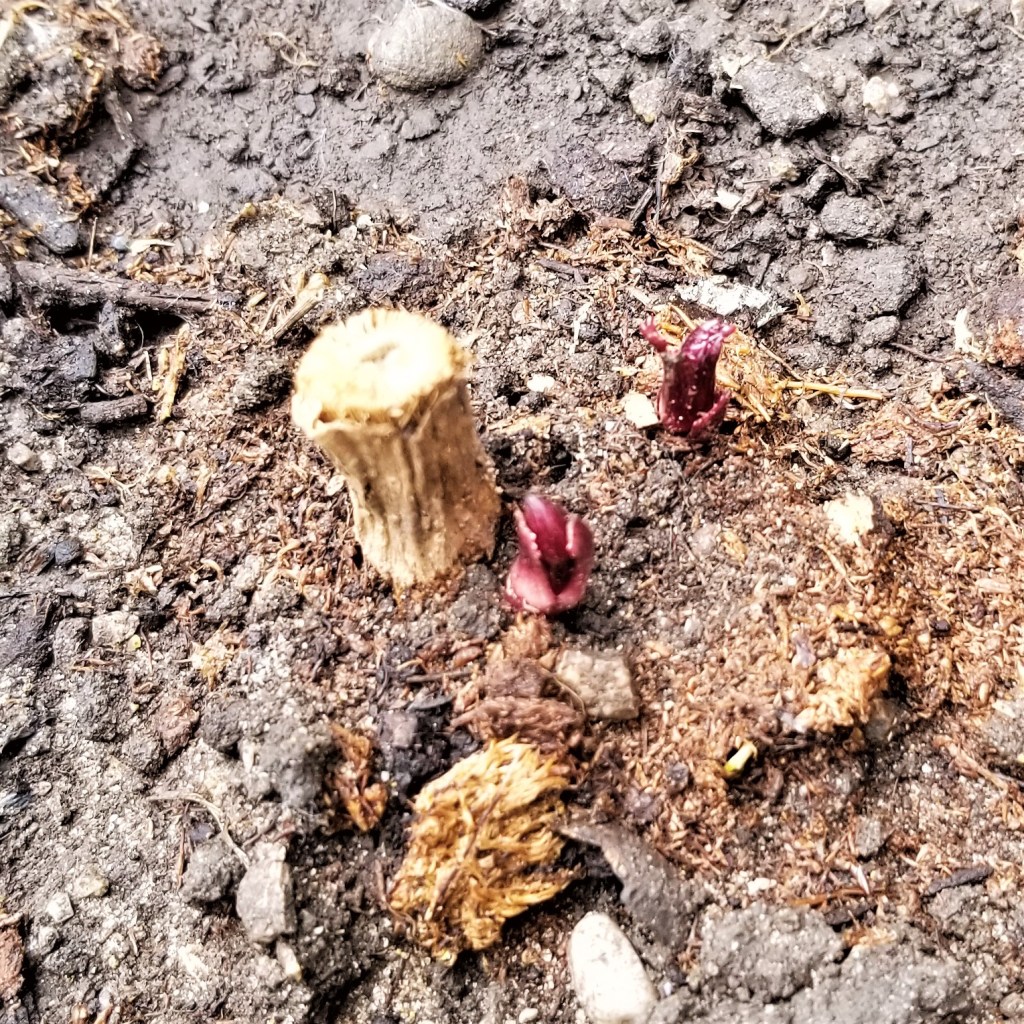
In the end, the crowns caught up with the seedlings, but were not as productive as the plants from seed. In general, it was a very beautiful and gratifying crop:
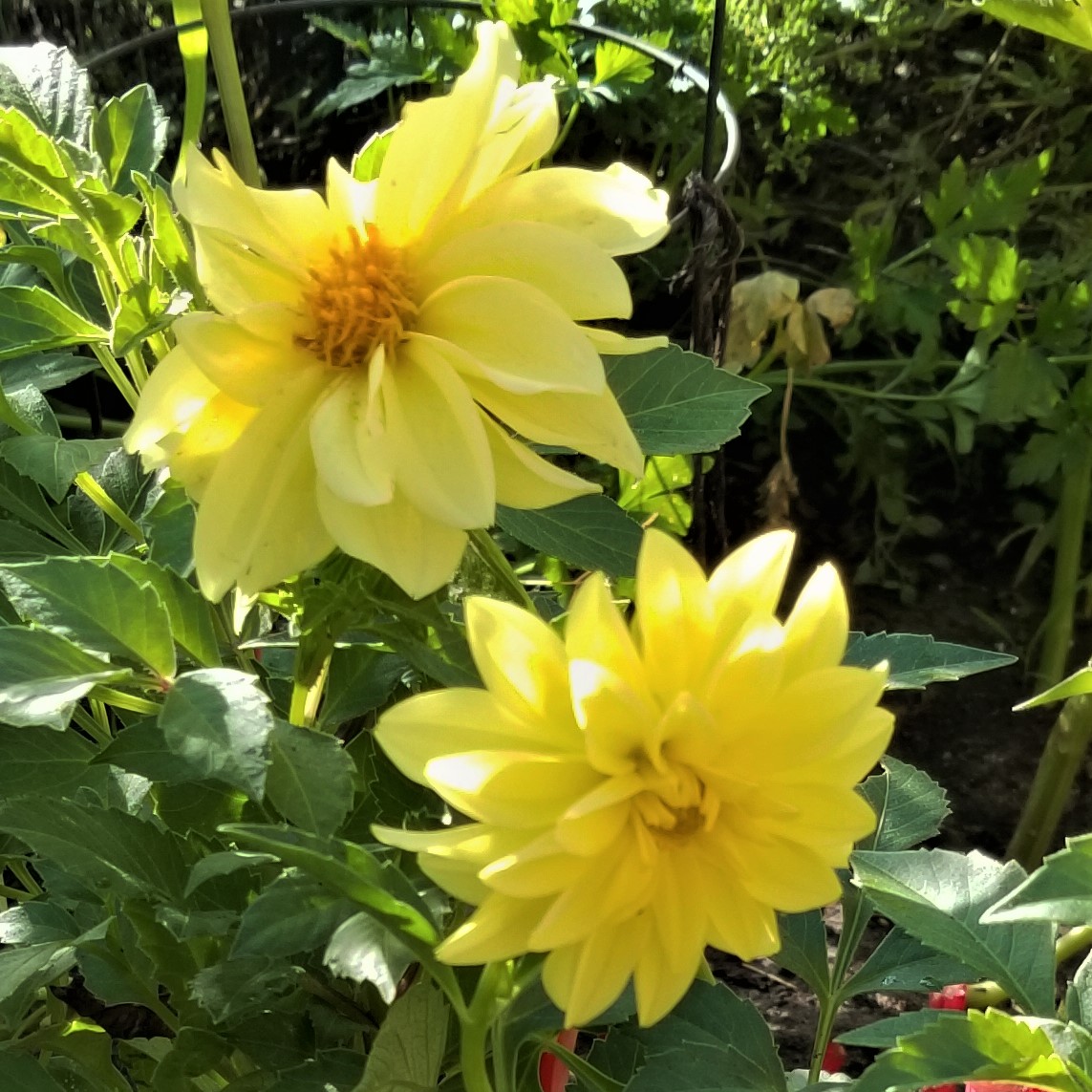
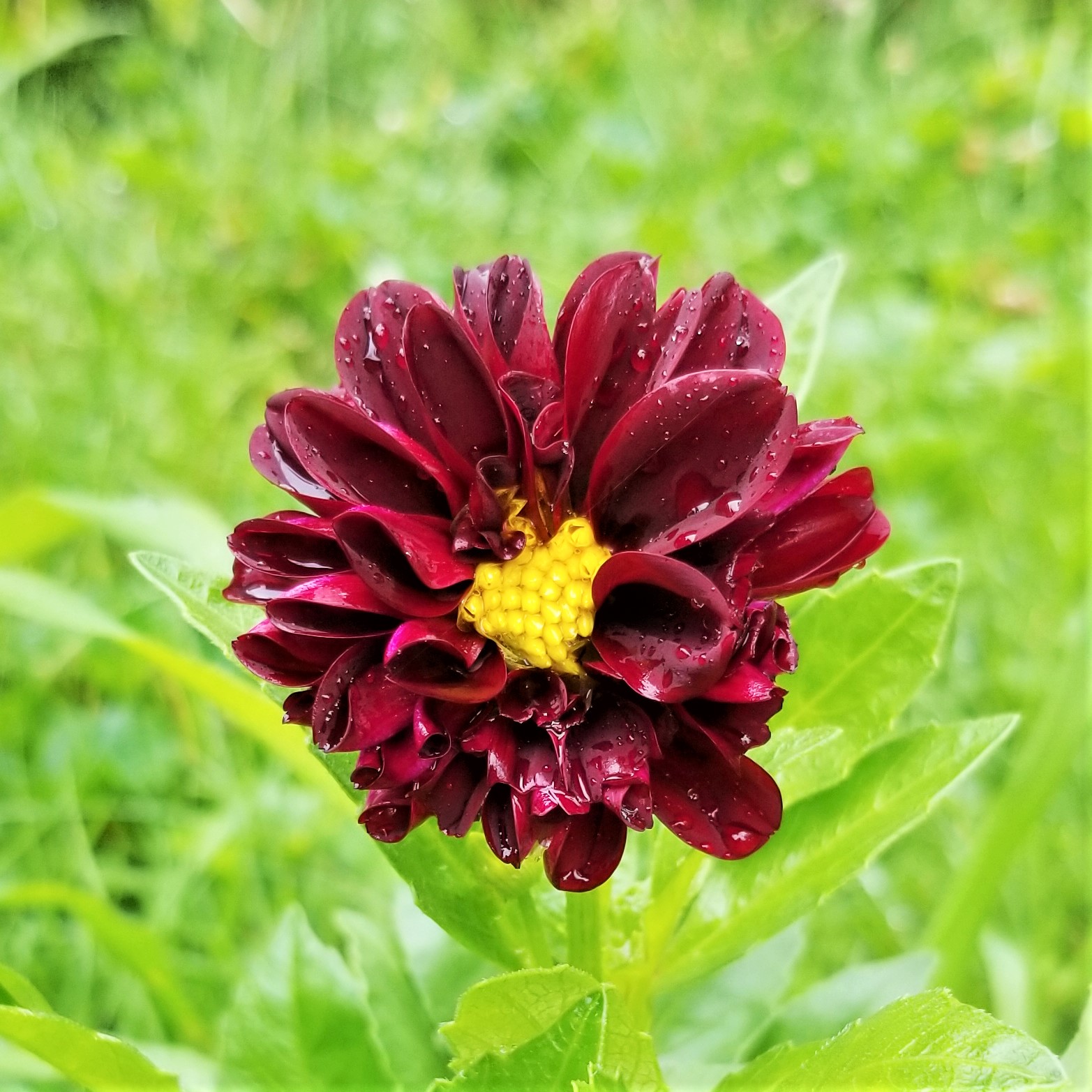
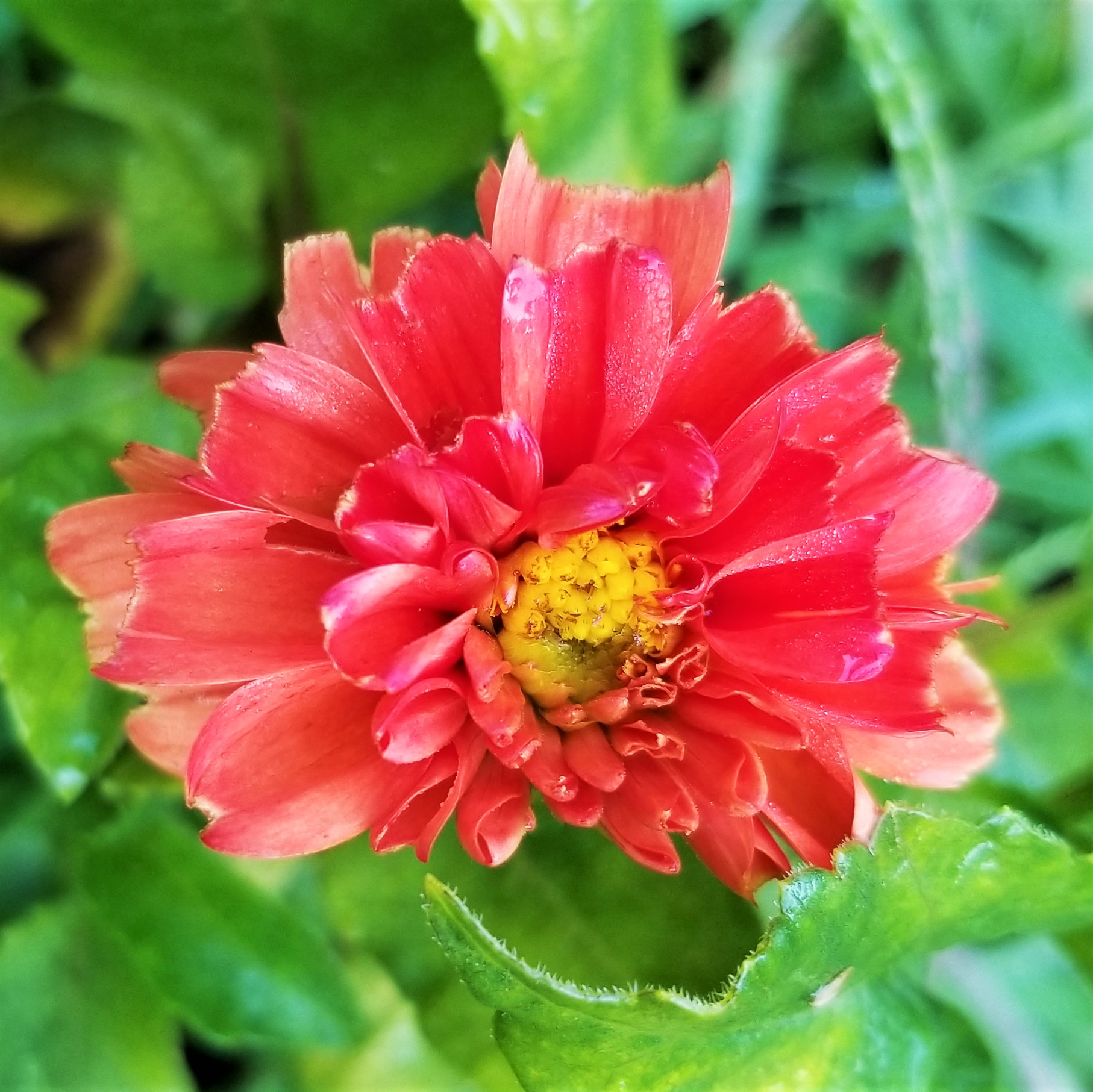

I have saved some tubers in a pot with soil in the garage; hopefully they will be viable to sprout again in the spring, and renew my garden beds.
I grew dahlias in my garden mainly because both dahlia blooms and tubers are edible, so I wanted to ensure mine were free from pesticides and chemicals for a food-grade harvest. Dahlia flowers and tubers have been a prestigious part of Mexican cuisine from centuries; the flower petals may be sprinkled on tacos, salads, and other dishes, while the tubers may be eaten raw, stir-fried, or cooked in a similar way as potatoes. In the photo below, green tortilla packets filled with dahlia tubers and cheese, are decorated with dahlia petals:
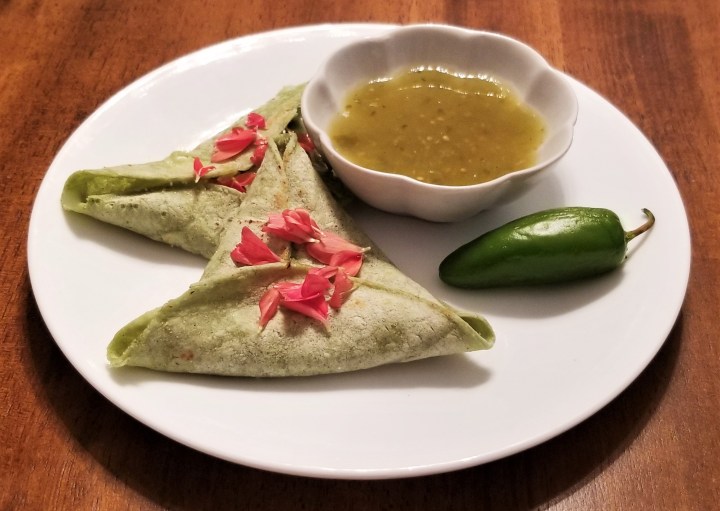
Fruits: Mini Watermelon
Watermelons (Citrullus sp.) are native to Africa and have been cultivated since ancient times, including by the Egyptians; wild species were watery and bitter; the cultivated, sweeter watermelons (Citrullus lanatus), appeared in the Mediterranean region about 2000 years ago. The Moors introduced watermelon into the Iberian Peninsula in the 13th century, and European exploration and conquest, as well as the slave trade, are responsible for its introduction to the American continent. I chose watermelon for my blog’s logo because, although not native to Mexico, watermelons appear predominantly in Mexican Art, Literature and cuisine; green on the outside, with a band of white rind and its red juicy meat, watermelon is practically an edible banner showing off Mexico’s national colours.
Since watermelon crops require a long, hot and humid season to thrive, I picked a mini watermelon variety to grow in my Canadian garden (Citrullus lanatus, var. Sugar Baby). Start seed indoors in paper pots filled with growing soil in the spring, and keep in a sunny, warm spot for 4-6 weeks. Cover the spot in the ground outside with black plastic two weeks before transplanting, to warm up the soil. Transplant seedlings when the weather is consistently warm; cut an X in the black plastic to create an opening for the seedling, water and add some sheep manure or compost. Rip paper pot, trying not to disturb roots. Position with soil line similar or slightly higher than in pot, gently pressing around the seedling to avoid air pockets. Water without getting vine wet. Place seedlings 2-3 feet (60-90 cm) apart. Place a cloche over each seedling, or tent with a row cover. Ventilate the cover during warm days, and remove once the plant starts to bloom, to allow pollination. Water when soil gets dry 1/2” (1.25 cm) from the surface. Leave black plastic in place throughout the entire growing season, to keep the soil warm, and protect the vines from weeds and slugs. I have had reasonable success, with small but very plump and healthy fruit:
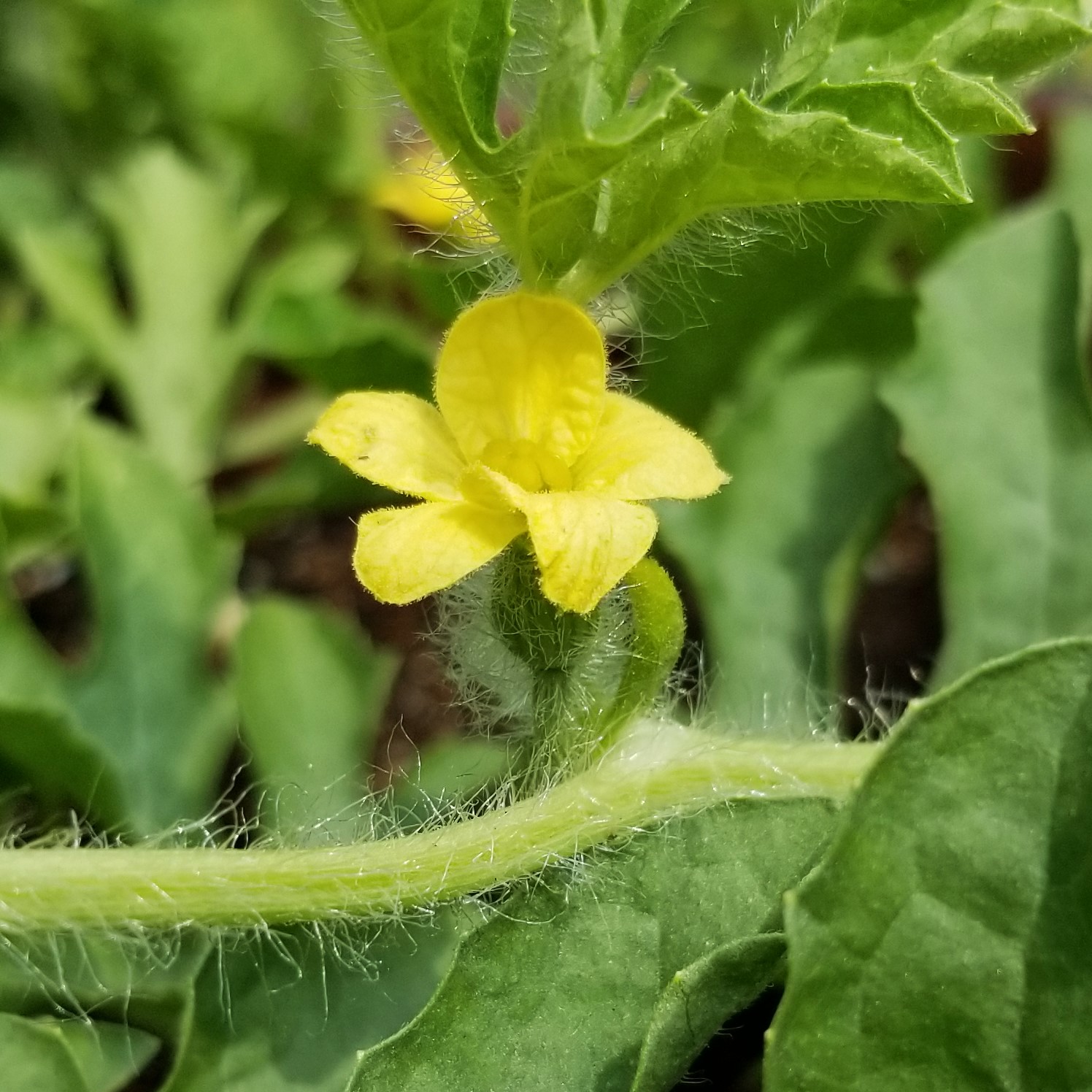
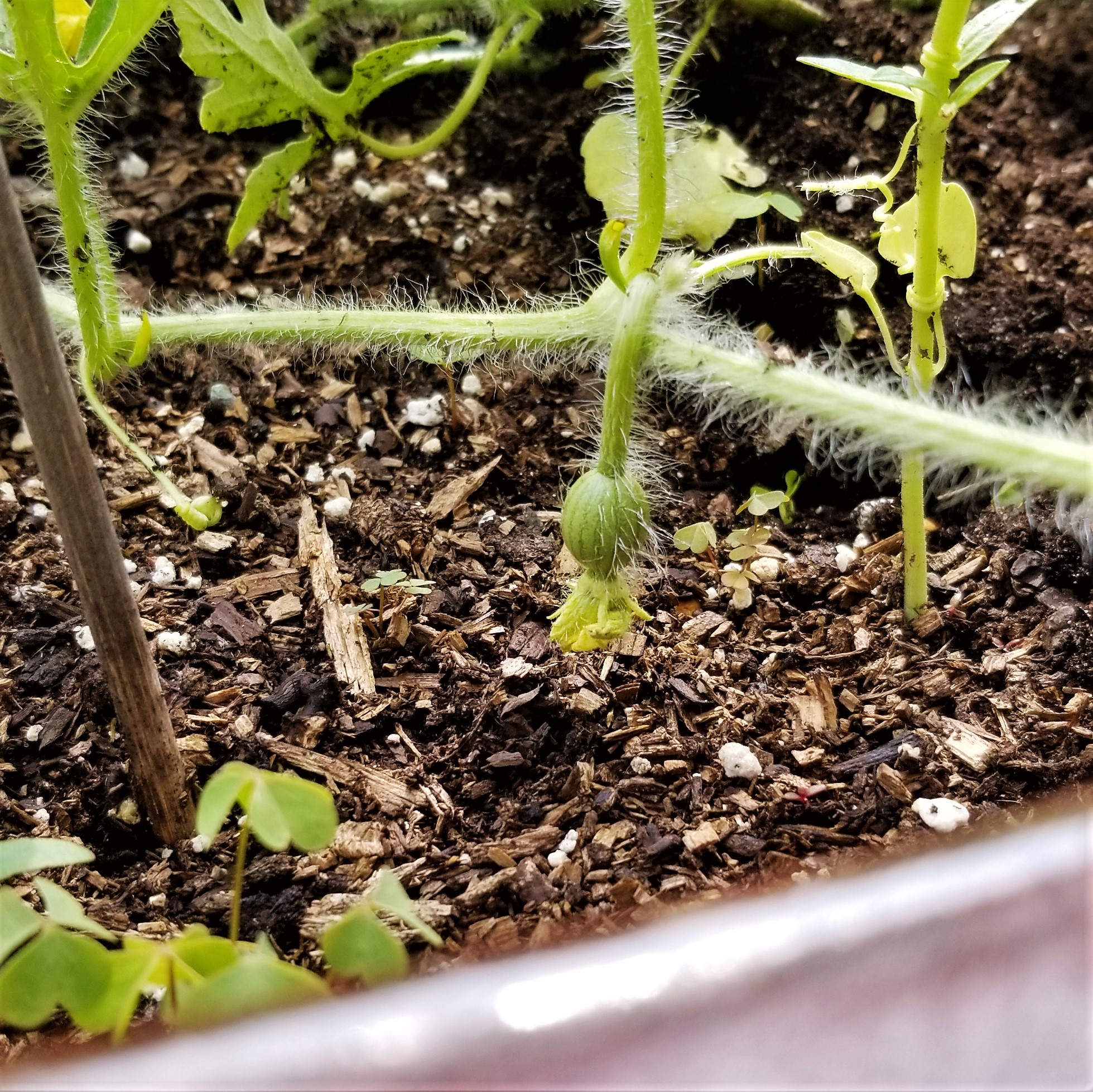
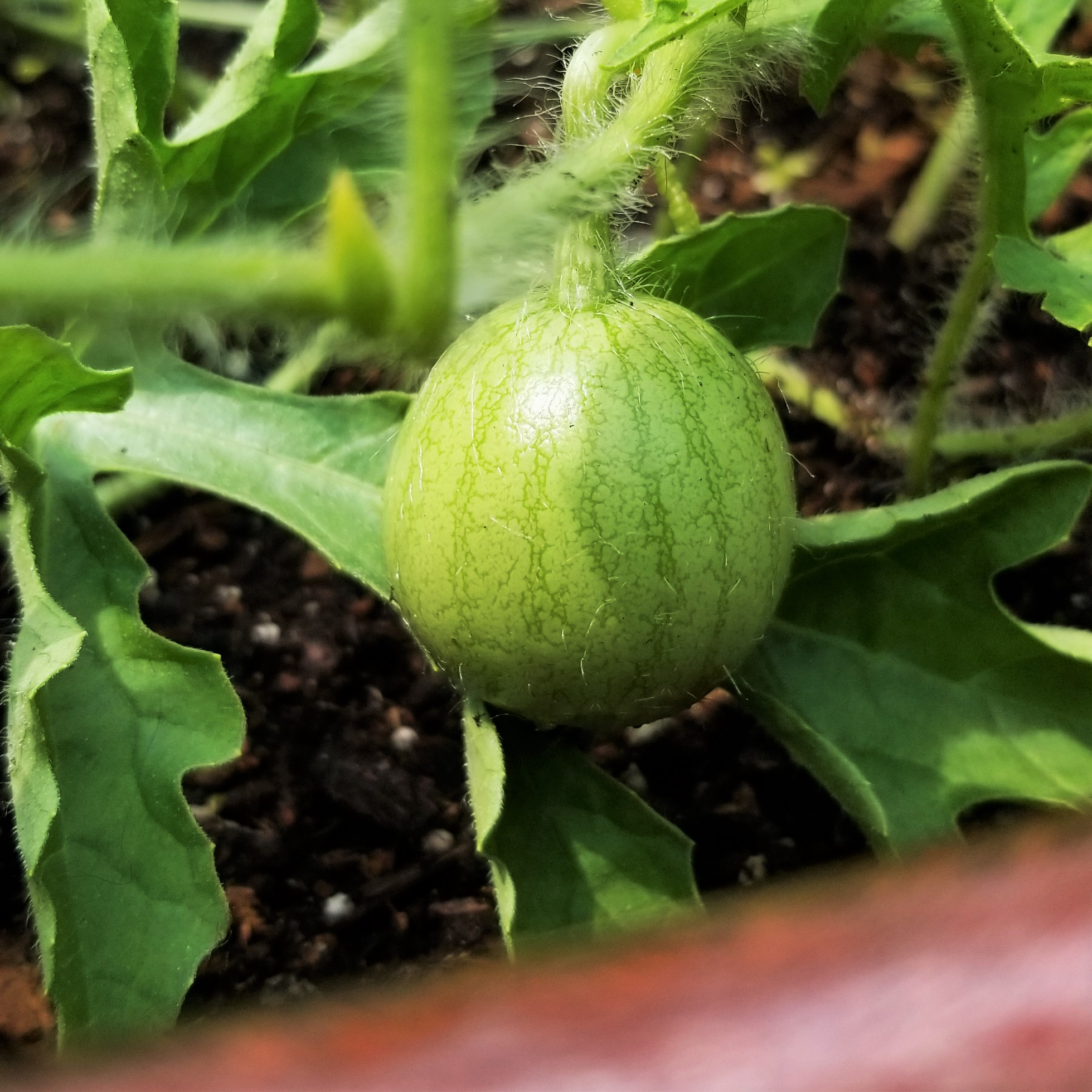
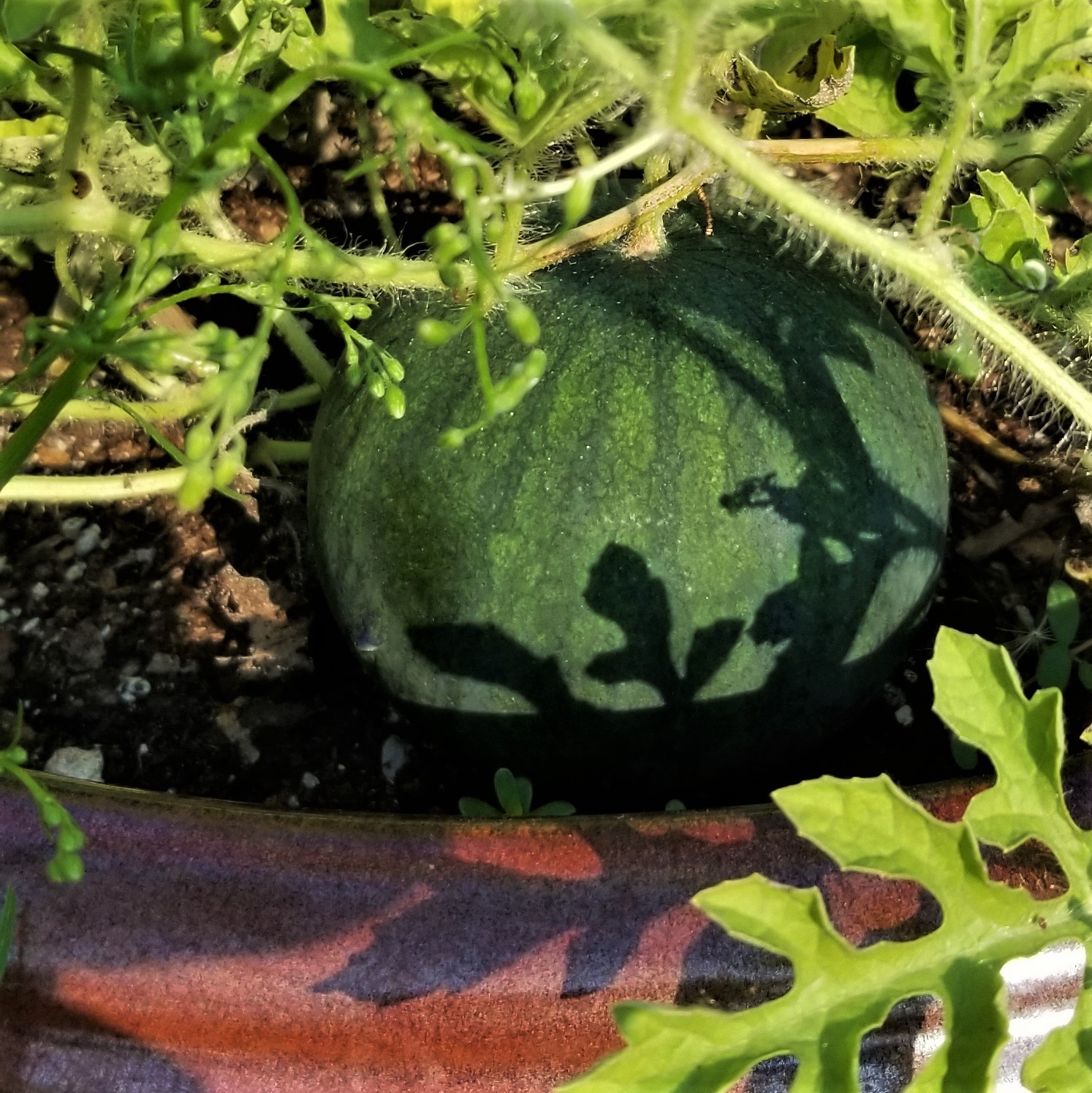

Baby watermelons look very pretty when cut in half, then hollowed and stuffed. In the photo below, the watermelon halves show bright pink flesh, ready to be scooped; it looked like it would be mealy, but it was actually flavourful and juicy:
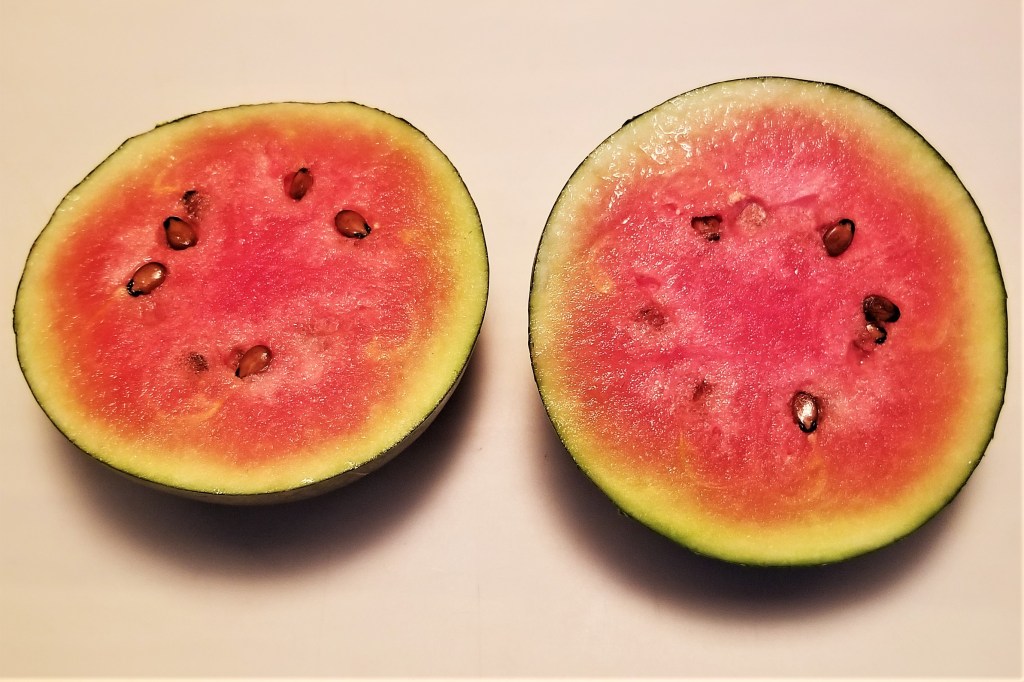
One creative way to stuff them is called sandía loca (crazy watermelon). Sometime in the 1990s, a trend started in Mexico, in which fruits and snacks were stuffed and topped with combinations of chili powder, candies, hot sauces, and all sorts of other various ingredients. For this reason, they were called “locos” – “crazy”; for example, the mini watermelon half (photo below, left) was hollowed and filled with watermelon balls, carrot sticks, sprinkled with salt and lime juice, and finished with a generous splash of chamoy sauce. Other ways to enjoy watermelon in Mexico are a smoothie (photo below, centre), and in cups of cut-up fruit and vegetables (fruta picada, photo below, right):
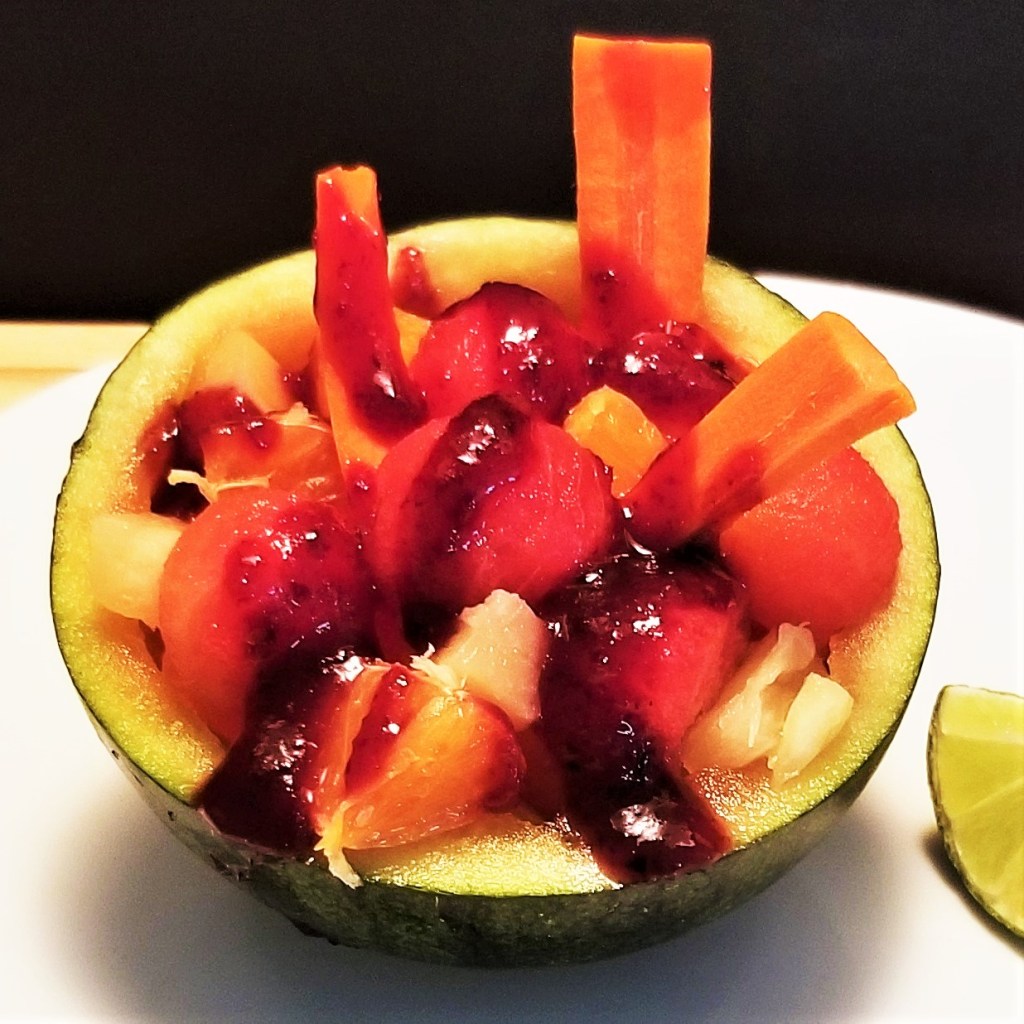

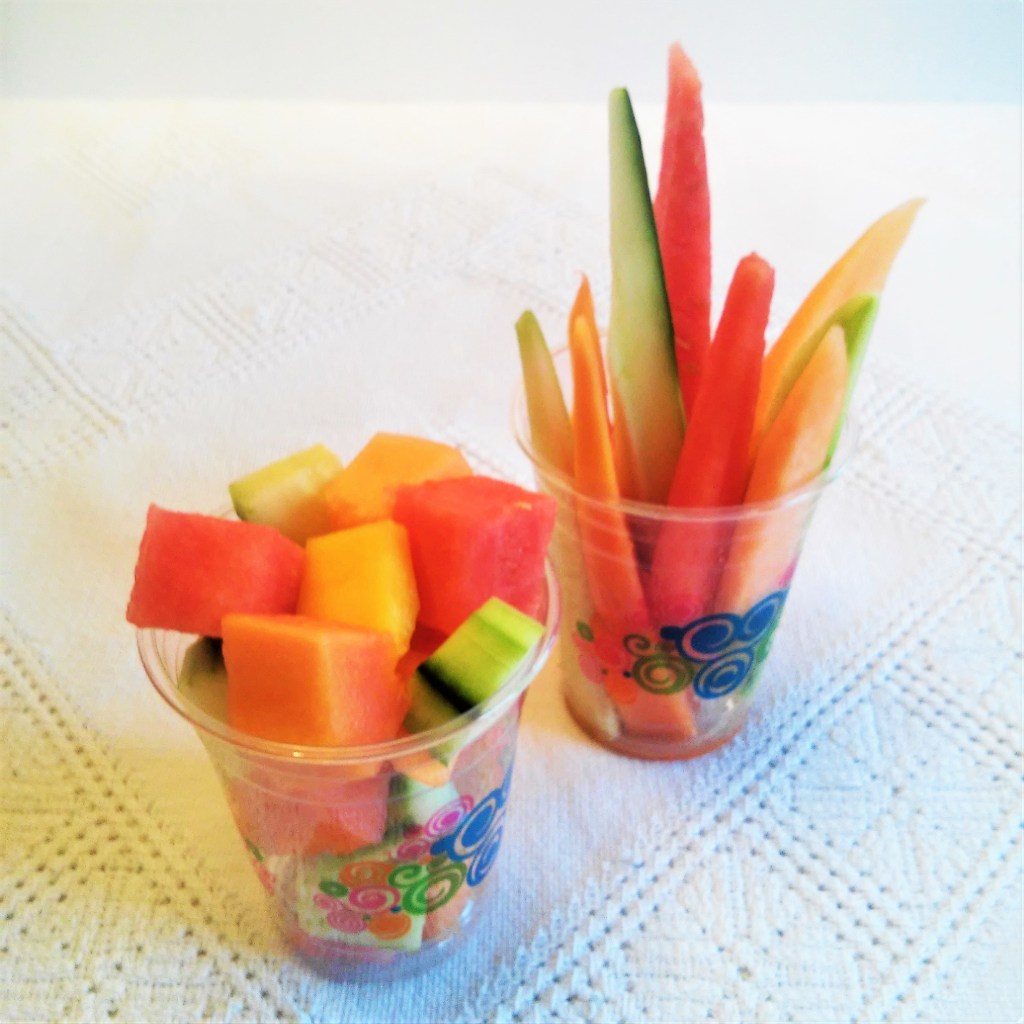
Herbs: Epazote
I always say that if you can only grow one type of edible, it should be herbs; fresh herbs do not last very long once cut, are expensive at the supermarket, and sometimes, as in the case of epazote, are hard if not impossible to find at markets outside of their native land. Epazote (Dysphania ambrosioides) is a traditional Mexican and Central American herb, known as wormseed in English. I bought a seed packet from West Coast Seeds™ a few years ago, spread some in a sunny patch in late spring, and I have watched them grow, produce a large harvest, then self-seed and come back, every year ever since.
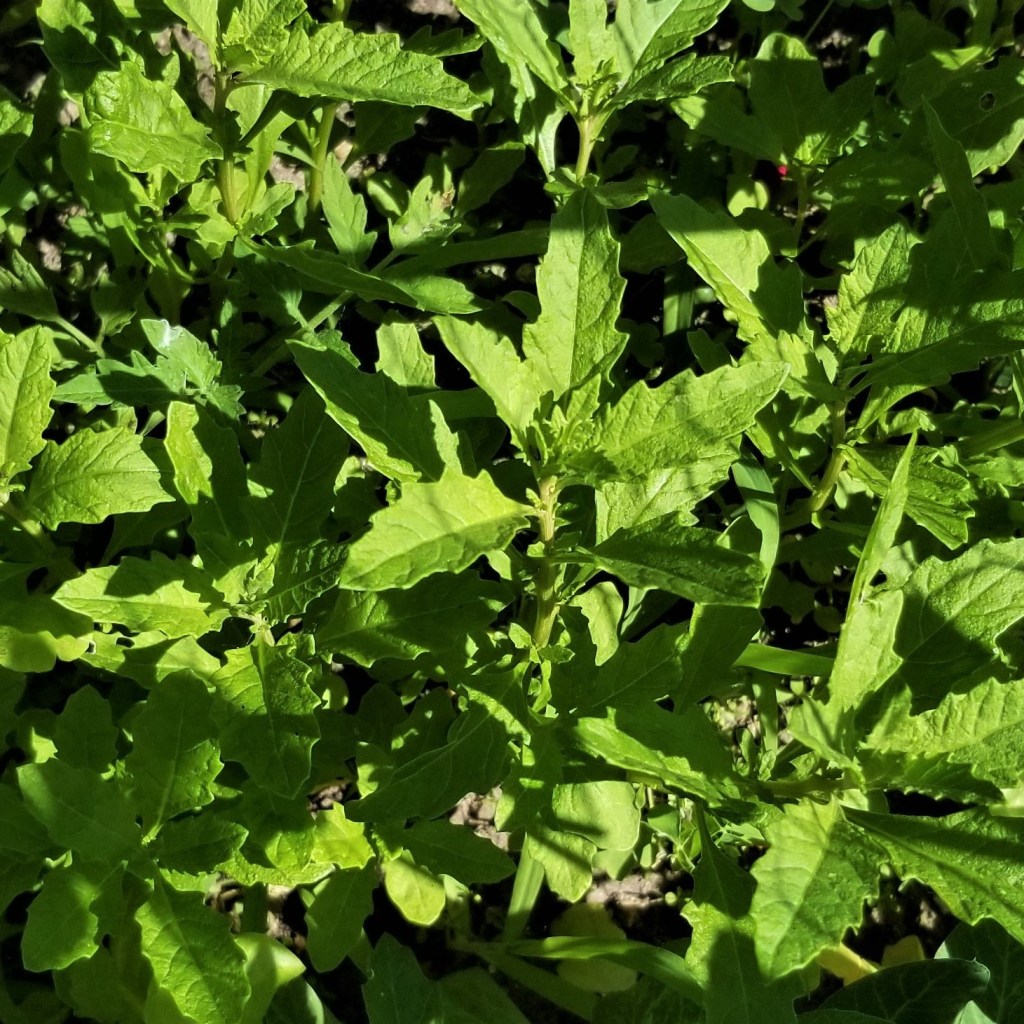
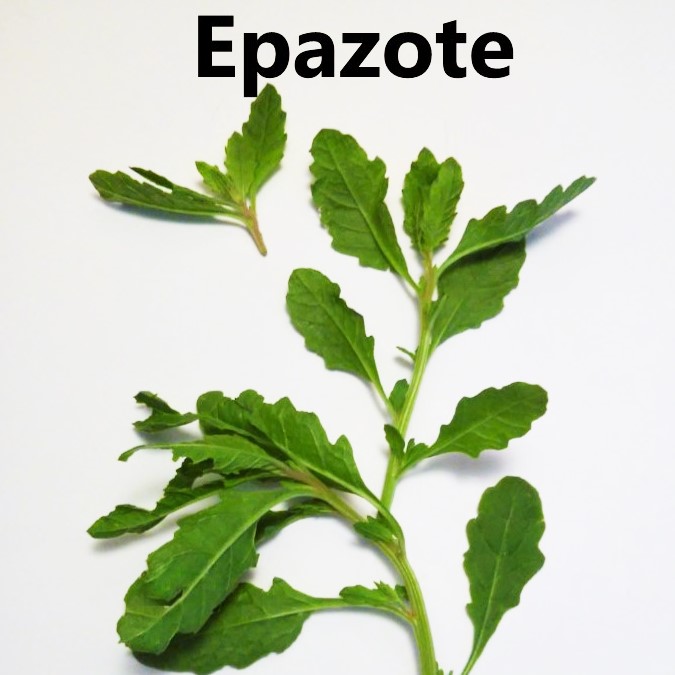
Adding a sprig of epazote to a pot of beans is very traditional in Mexico, but there are many other Mexican dishes that call for epazote. Just a few examples that I have shared are (click on titles for full stories and recipes): Green Pipián with Squash – Pipián verde con calabaza (photo below, left), Fish in Red (or Green) Sauce – Mixmole rojo (o verde) (photo below, centre), and Tortilla Soup – Sopa de tortilla (photo below, right):
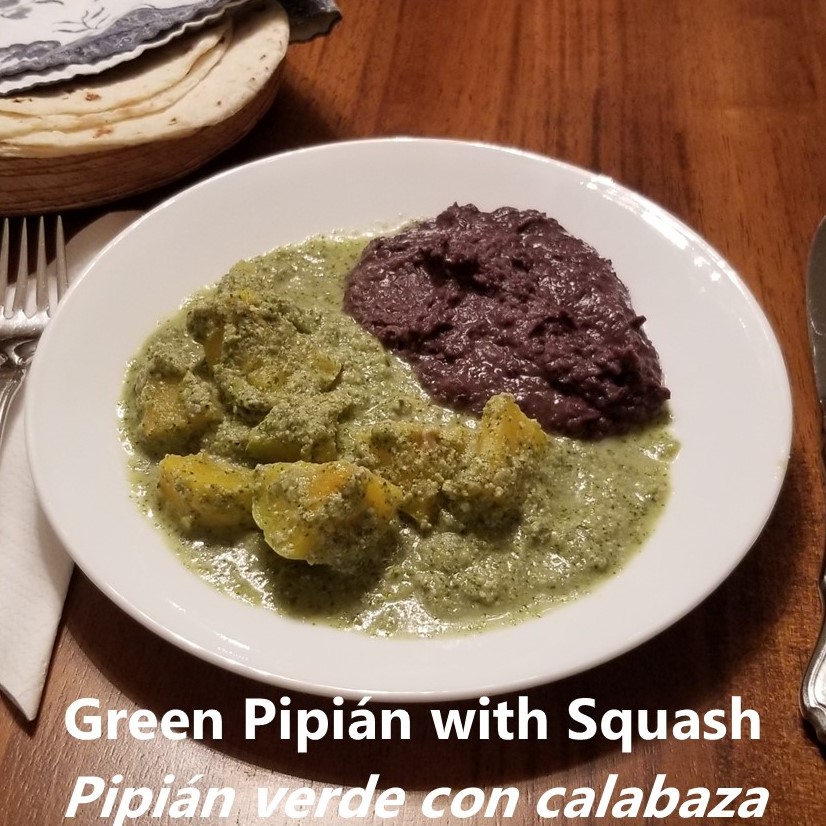
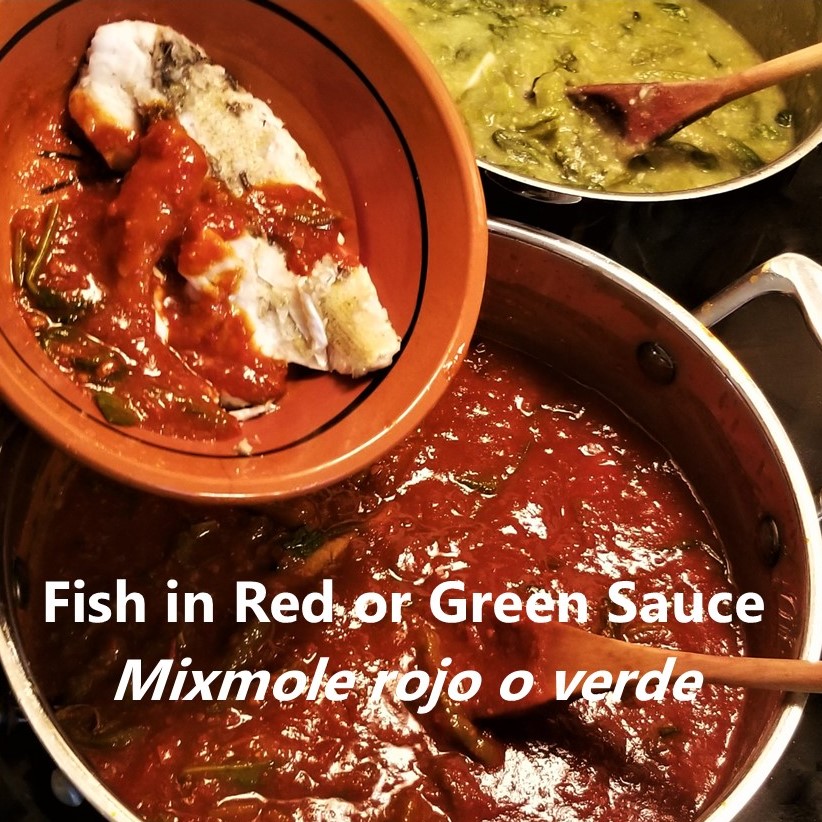
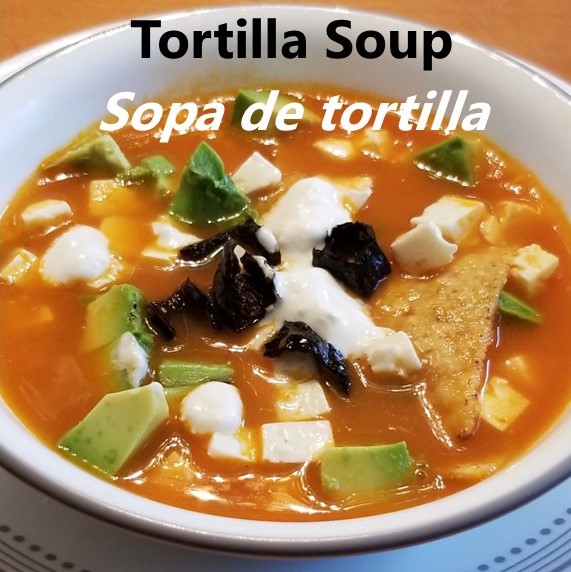
Legumes: Beans
All common beans, belonging to the genus Phaseolus, are native to the Americas. Many people, including myself, have wondered why bother with homegrown beans, especially for shelling, since the small envelopes of seeds are more expensive than buying a bag of dry beans at the supermarket, probably the same price as a couple of cans, and a crop of beans requires time, work and space in the garden. All I have to say is that not only are they easy to grow by direct sowing after the last spring frost, and fun to harvest, but their flavour, texture and the thickness of their broth when cooked, are definitely worth the effort. It is also a great opportunity to find and taste heirloom varieties, such as the black and white Calypso (nicknamed Orca) variety I grew a few years ago (photo below, left). In addition, harvesting at different stages provides batches of green beans (photo below, centre), and fresh shelling beans, that may be preserved by drying (photo below, right):
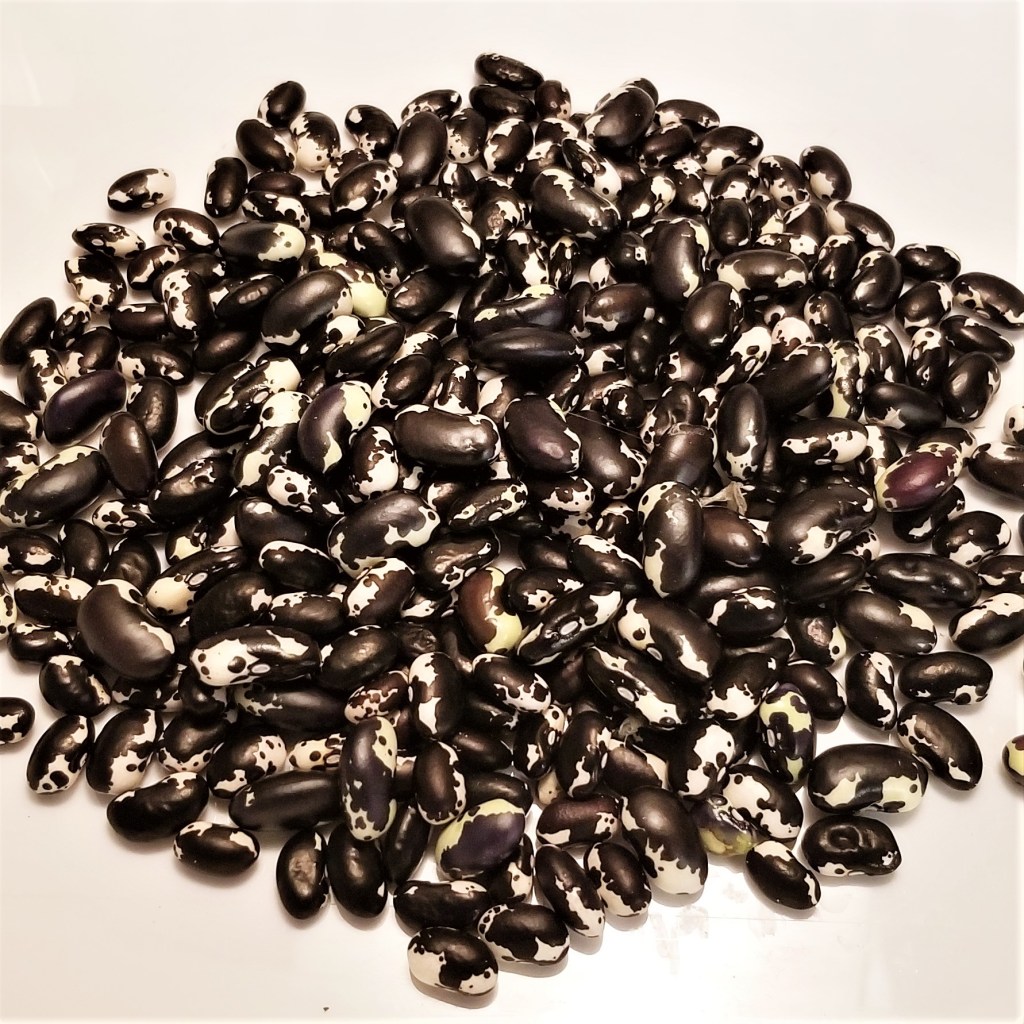
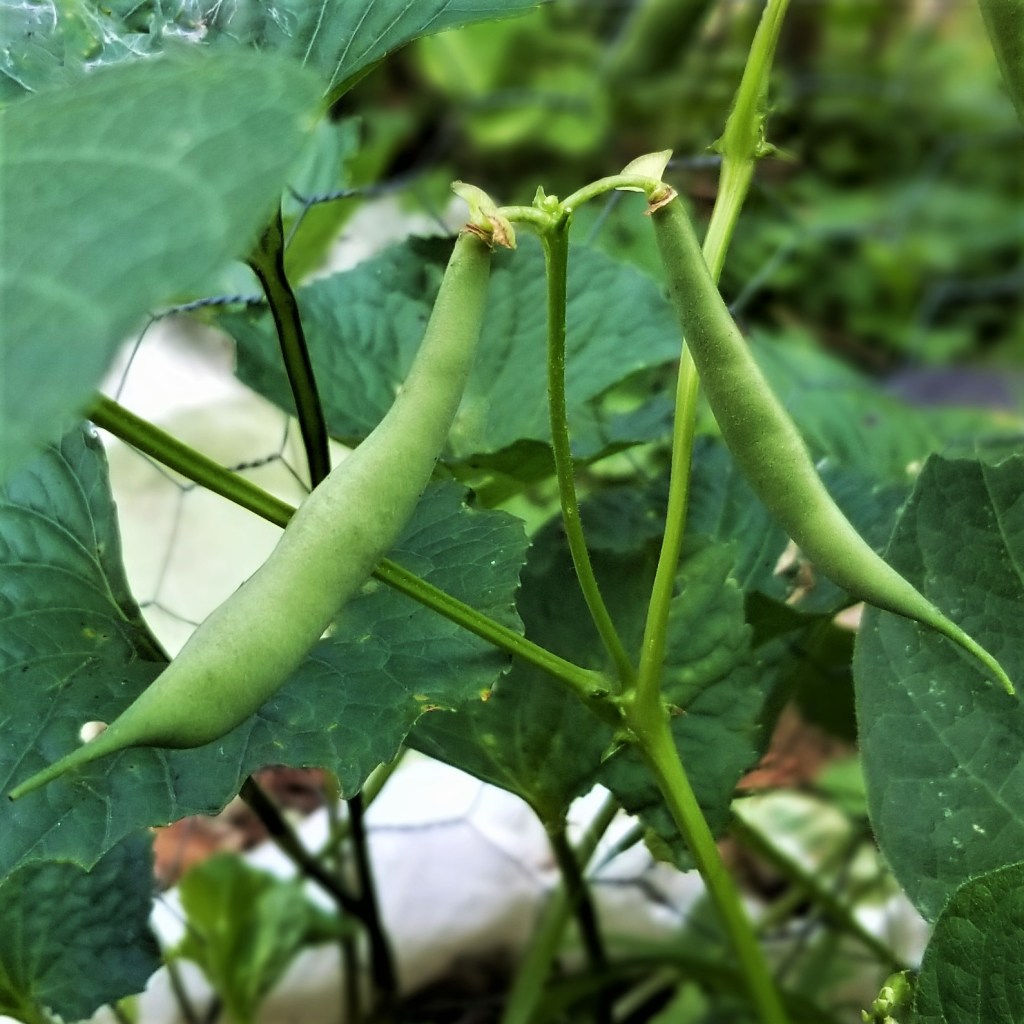
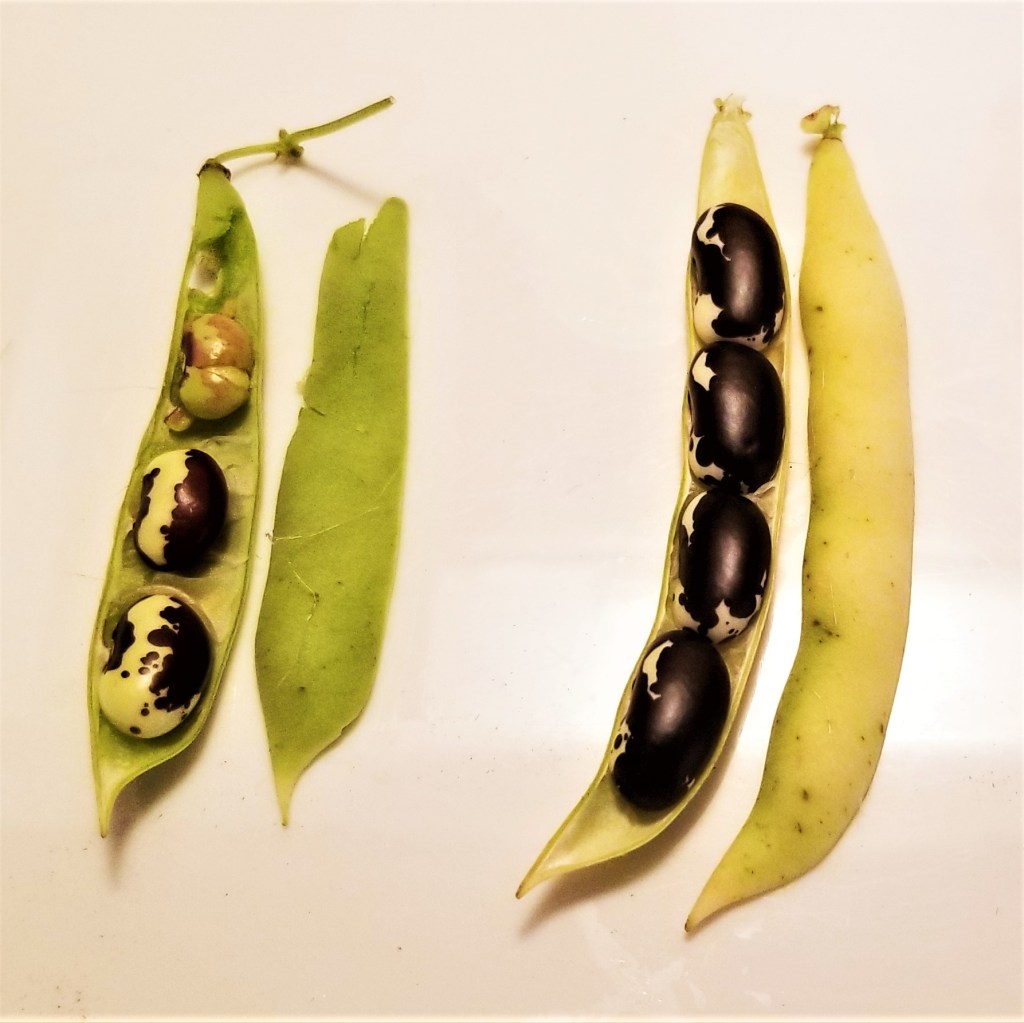
Beans from the Pot – Frijoles de la olla is an omnipresent dish in the Mexican kitchen, just as refried beans – frijoles refritos seem to be the expression of the same principle on every plate served at Mexican restaurants. There are innumerable Mexican dishes featuring beans, both green or shelled; three examples are (click on titles for full stories and recipes): Green Beans in Creamy Chipotle Sauce – Ejotes en salsa cremosa con chipotle (photo below, left), Bean Soup – Sopa de frijoles (photo below, centre), and Tortillas in Bean Sauce – Enfrijoladas (photo below, right):
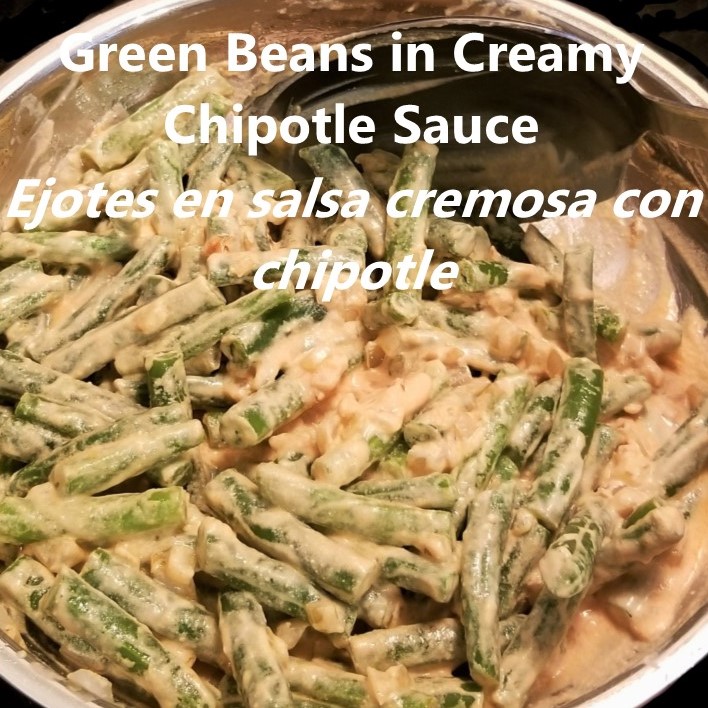
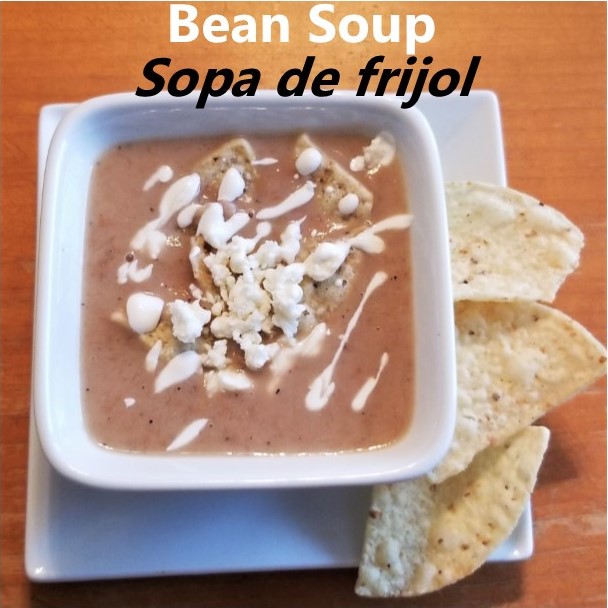
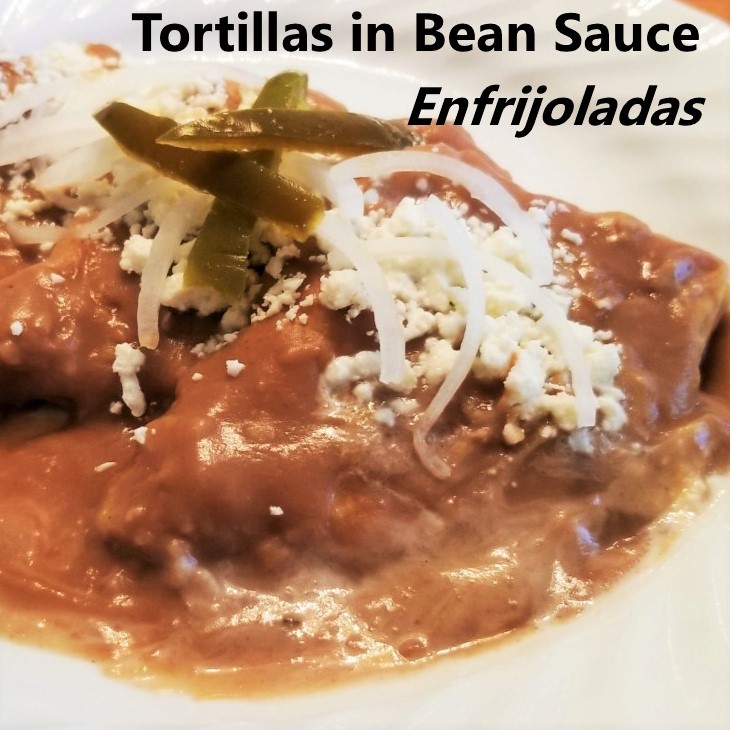
Vegetables: Tomatillo, aka, Miltomate, or Tomate Verde
Although botanically speaking tomatillos (Physalis philadelphica and Physalis ixocarpa) are a fruit, they are harvested and eaten when still not fully matured, and in the Mexican kitchen, are considered a vegetable. Tomatillos are sometimes confused with green (unripe) tomatoes (Solanum lycopersicum); they are both part of the same botanical family (Solanaceae), but are completely different species. Tomatillos are also known in English as husk tomatoes, and in Mexico, they are most commonly called tomate verde, or miltomate. I like to grow a crop of tomatillos in my garden every year, because it is sometimes hard to find them fresh at stores in my region, and because they are a joy to grow, starting seed indoors and then transplanting and framing in a tomato cage or trellis when the warm weather arrives. After the bright yellow tomatillo flowers are pollinated, green shells form (photo below, left). The shells shelter the growing fruit, becoming papery as the tomatillos grow inside (photo below, centre). Tomatillos may be green or purple in colour, and as I mentioned, they are harvested when still under-ripened (photo below, right):
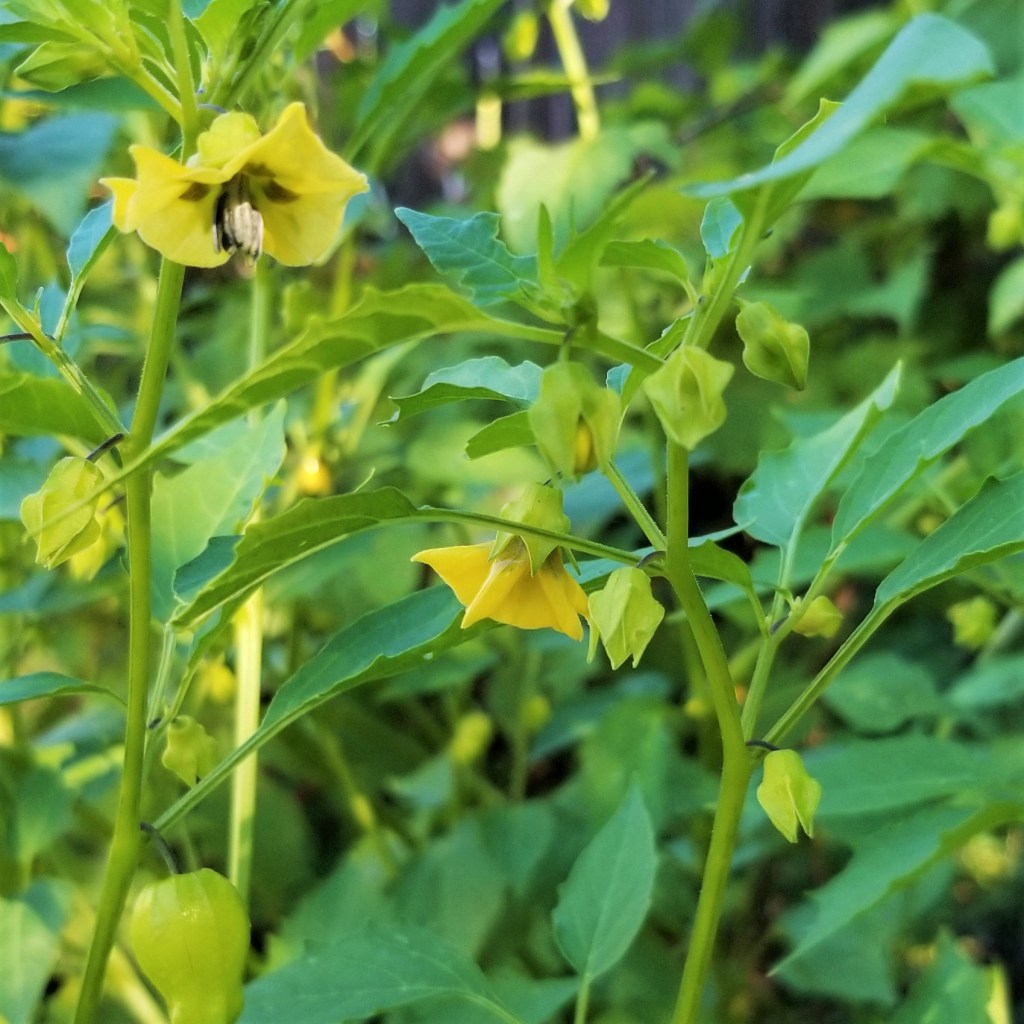
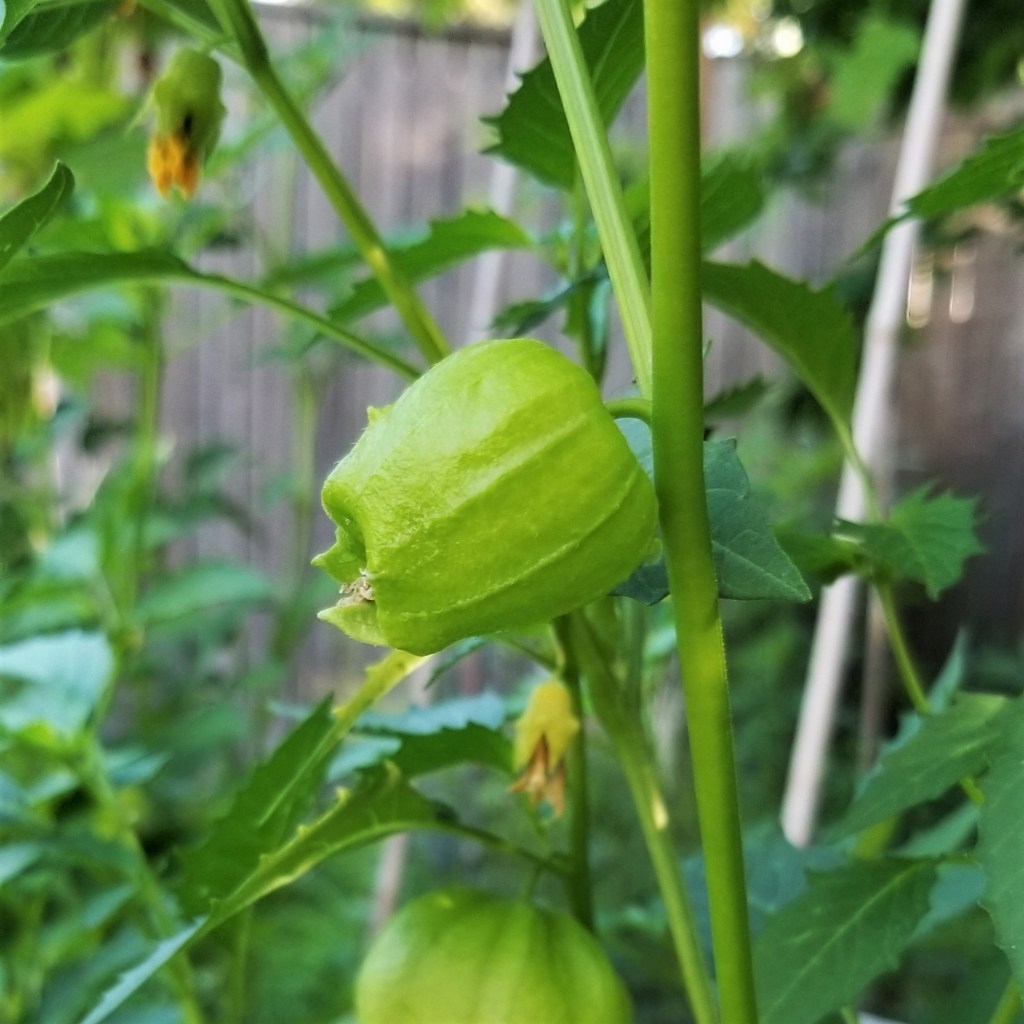
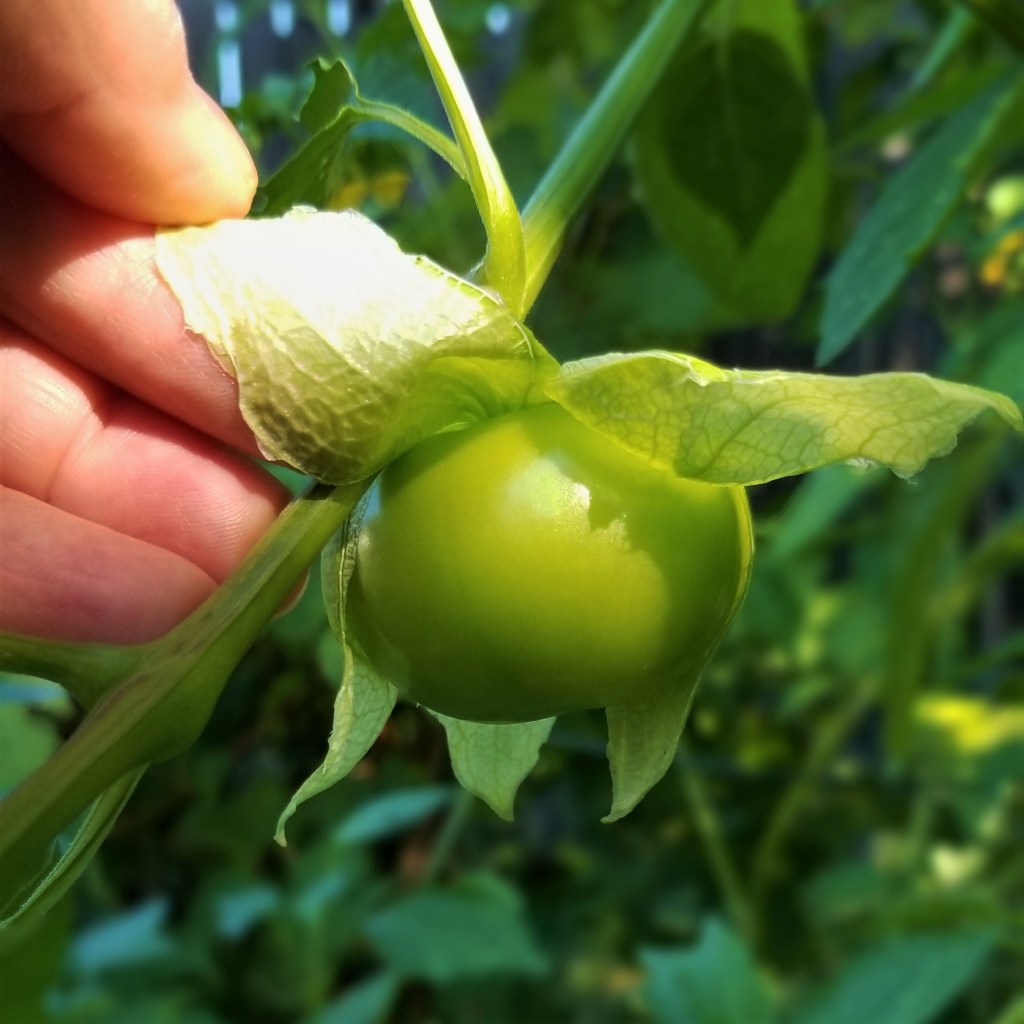
An immediate reward, after the first summer harvest, is to prepare a batch of raw tomatillos with hot peppers and onions, to savour the freshness of their tart flavour and juicy texture, then cook some for a tasty spread of green sauces – salsas verdes (photo below, left). From there, the sauce will enhance any taco or quesadilla, or become a central ingredient in many delicious dishes, such as a platter of Swiss Enchiladas – Enchiladas suizas (photo below, centre), or Stuffed Chicken Breasts in Green Sauce – Pechugas de pollo rellenas en salsa verde (click on highlighted text for full stories and recipes):
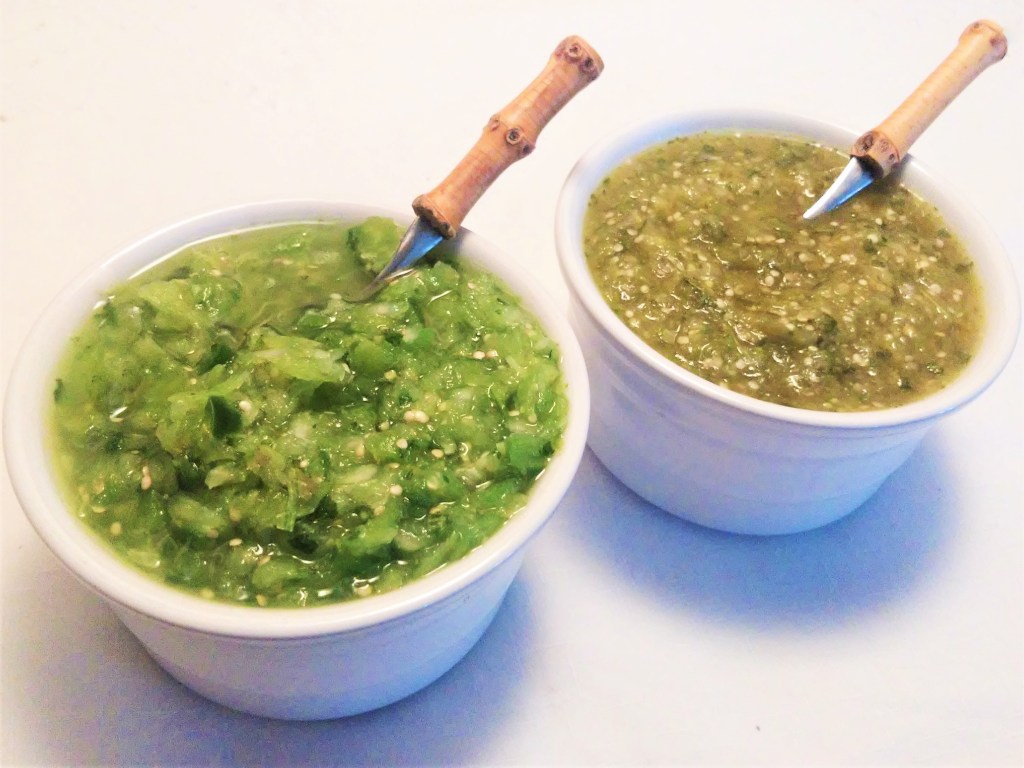
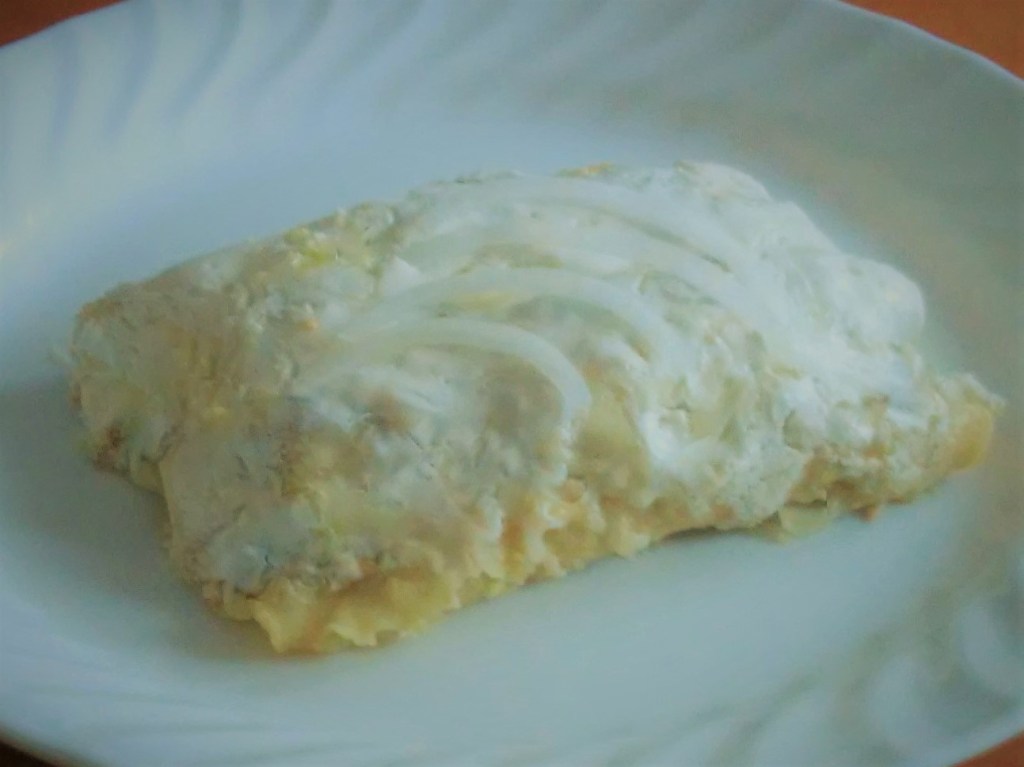
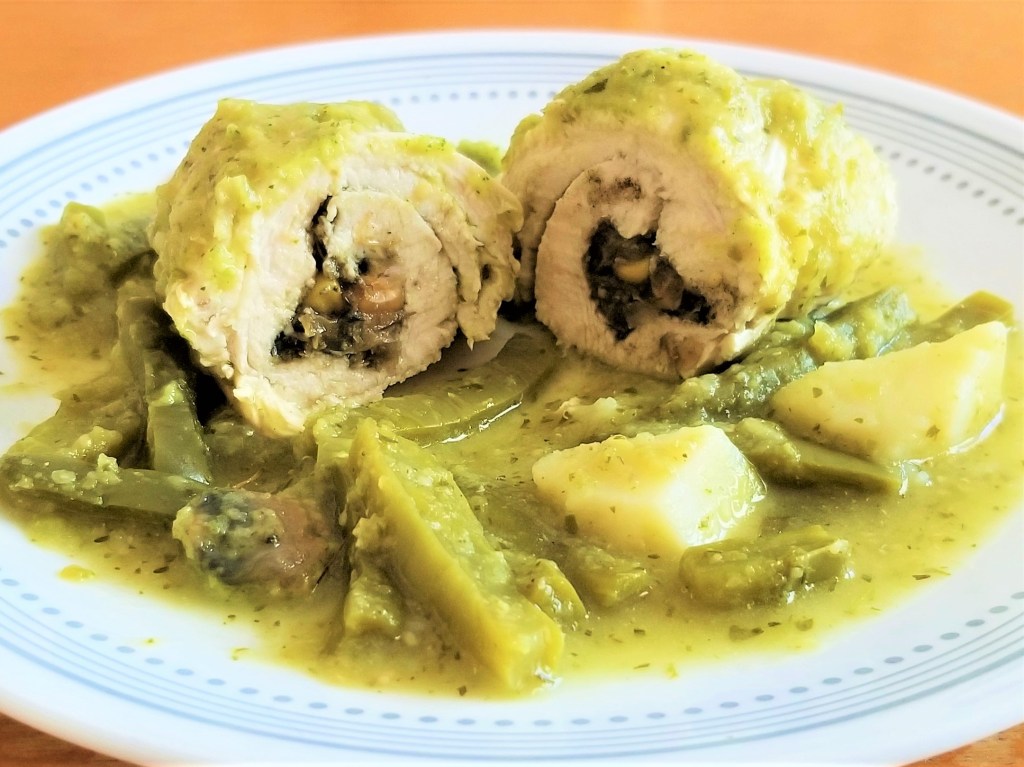
I am eager to start my second decade as a backyard gardener, and I have already ordered my seeds for some exciting new-to-me crops this year.
I am joining Six on Saturday for February 25, 2023, hosted by Garden Ruminations.








I started my tomato and tomatillo seeds yesterday, and am delighted to have finally found a local source of epazote seed–not easy around here. Good luck with your garden!
LikeLike
Oh, that’s great, happy gardening!
LikeLike
Wow! Very impressive, Irene. I too have been growing tomatoes in two pots for the last few years. Every year I am blessed with one tomato. This year I had a bumper crop of five !😀😀
LikeLike
😂 unless the pots are really big, tomatoes tend to definitely be more productive when in the ground.
LikeLike
Lol! I agree. But staying in a high-rise apartment I can only grow in small pots.
LikeLike
Ah alas, yes. Cherry tomatoes are a good option for pots, and so sweet.
LikeLike
Will try that. 👍🏼
LikeLiked by 1 person
How interesting, your water melon growing is very impressive.
LikeLike
The mini watermelon is not too hard, thank you, Rosie!
LikeLiked by 1 person
Now I’m feeling very hungry and ready for spring!
LikeLiked by 1 person
That makes two of us, Rebecca!
LikeLiked by 1 person
so very impressive 🙂
LikeLiked by 1 person
Thank you!
LikeLiked by 1 person
Wow, your vegetable garden is a garden of Eden! ❤
LikeLike
Thank you, Sarah!
LikeLike
Wonderful array of edible crops!
LikeLike
Thank you, Eilene!
LikeLiked by 1 person